
Long naps. Weekends at the beach. Trashy 18th-century novels. Admit it, that’s what you thought we were up to in January.
Not so much, but we’ll forgive you for thinking that we were taking it easy. In fact, we’ve been working frantically to plan the year ahead, train staff, and do some important maintenance before your next visit.
Winter training has been around for decades, with staff taking advantage of a quiet season to return to the classroom. The goal is to ensure that everyone across the Foundation has the knowledge to help our guests have a wonderful educational experience in every aspect of their visit.
This year, most front-line staff from our stores participated in the sessions for the first time in years. There were also many of our colleagues in hospitality who represented the hotels and restaurants. Here are just a few highlights of our “winter vacation.”
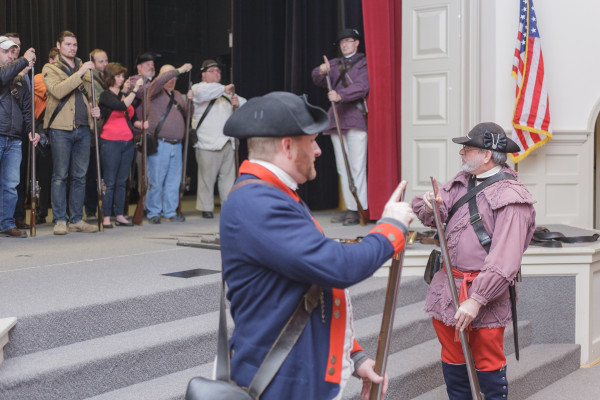
“This goes against all my training—putting a deadly weapon in the hands of a raw recruit,” military interpreter Dale Smoot grumbled (cheerfully). The “recruits” were being introduced to muskets and small arms. They learned about the use of military long arms in the 18th century, and how to hold, load, and fire their weapons. (Taking no chances, the center section of the theater was cleared before even this imaginary gunfire.)
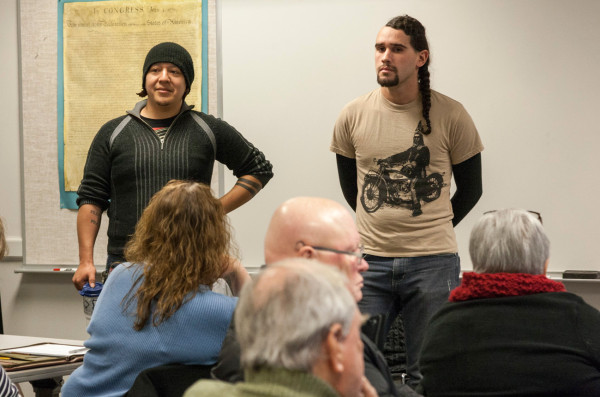
A series of sessions gave participants the opportunity to ask interpreters Kody Grant (above left) and Warren Taylor (right), and Buck Woodard (not pictured) any question at all about Colonial Williamsburg’s expanding American Indian Initiative. Preconceptions, stereotypes, slurs, the right word—everything was on the table for a frank discussion of a frequently sensitive topic.
The questions were many of the same ones that vex visitors. What words should we use? When is it ok to “dress up”? How do we best understand the presence of Native Americans in 18th-century Virginia? We’re all getting better at answering those questions thoughtfully.
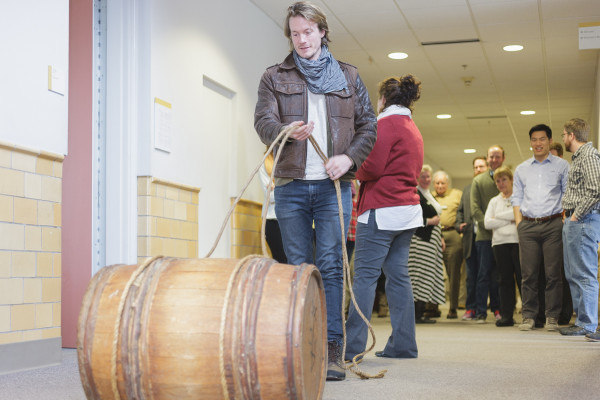
Why lift or carry when you can roll? The coopers introduced colleagues to the art of “parbuckling,” or using ropes to control a barrel or cask on an incline. The ease of letting barrels slowly roll down the stairs had many of us rethinking how to move. Turns out those barrels were pretty useful. In fact, we learned that compound arch casks are the strongest man-made wooden containers.
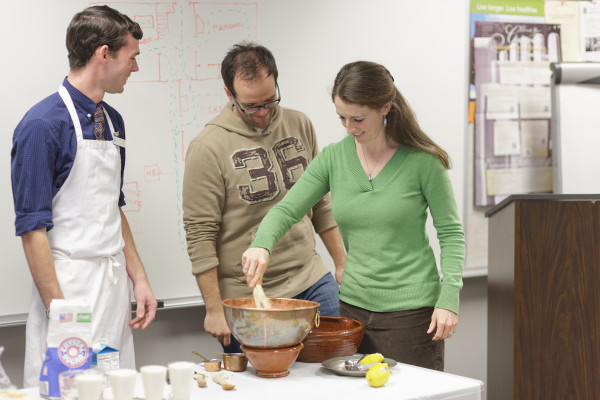
The drinking started early in the Domestic Arts session, but alas, it was apple juice in the syllabub. Everyone got their chance to help make Eliza Smith’s recipe as staff from the Powell House guided participants through a day in the life of a “notable housewife” such as Mrs. Powell. The Powells, explained Pamela Blount, were rising in society. The family was not among Williamsburg’s elite yet, but they were beginning to be able to afford nicer things.
From the pre-dawn preparation of breakfast by the household’s enslaved persons to going to bed, we followed the bustle of the day from a woman’s perspective. The tasks included mending, laundry, tending to the children’s education, and overseeing the meals and the shopping. Some were more mundane than others, but it was never quiet.
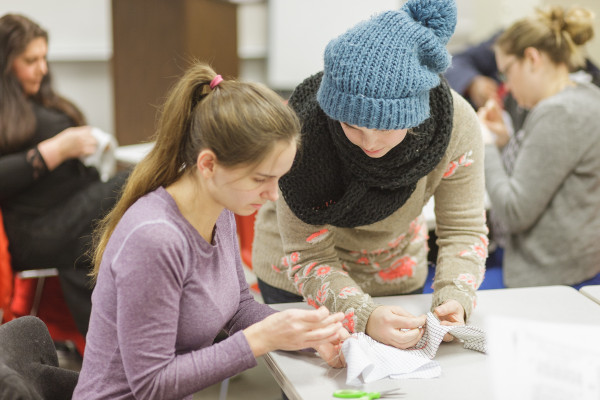
“Travel, catch, pull through… Travel, catch, pull through…” The milliners gave a quick lesson in “plain sewing,” a critical 18th-century skill. I learned that shirts, shifts, and plain petticoats were more tightly stitched than decorative garments. These essentials, as we might consider them, were built to last a long time. More decorative garments, such as dresses with embroidery, received fewer stitches. It was less work and, when styles changed, it was easier to remove the stitches and rework it in the new fashion.
Our archaeologists updated everyone on another fascinating year of finds. Meredith Poole explained why finds like old coins get much of the attention, but trash is what we can learn even more from. Did you know that until the 20th century most people just threw trash in their backyard?
And artifacts can help us understand plenty: how a building was constructed, what was used in that space, what was activities took place there. We can learn how they cooked their food by looking at bones, for example. And scraps from bone buttons found at the Armoury site suggest they wrere repairing uniforms there.
Some of the most visible activity in the Historic Area was work performed by our unheralded but vital maintenance crews, who were painting, trimming trees, and repairing broken doors and windows.
In addition, the arms on display on the walls the Governor’s Palace were cleaned. The Post Office received a makeover with plaster repair, lighting, painting, and window film. The Coffeehouse’s interior finishes got a fresh coat of paint. At the Capitol the stone pavers in the House of Burgesses were repaired.
Window film was placed on the first floor windows at the Wythe House (which included the replacement of several broken panes) and in the supper room of the Palace. Matt Webster explained that the film protects the objects from sun damage while allowing better lighting due to the removal of the old plexiglass system.
So here’s the bottom line. We’ve been working hard to get everything in shape from top to bottom. Expect things to look tidied up, a staff full of new historical knowledge to share, and—stay tuned—some surprises.
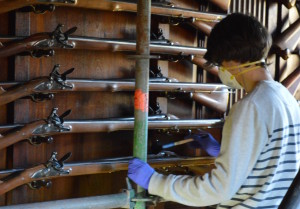
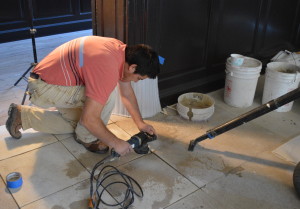
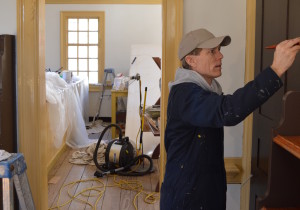
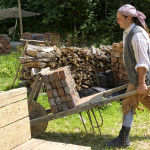
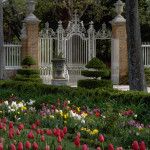
Cathy - Franklin, TN says
Thank you ALL for your hard work and efforts to ensure the experience remains as true to history as possible. We’re excited to see the upgrades during our next visit (April).
We think you’ll be pleased. Thanks for reading!
As someone getting ready to move, I find the idea of parbuckling very interesting. Using large packing boxes for even lighter items is cumbersome.
Tempting, isn’t it? Give it a try!
You speak the truth, sir. I saw evidence of much of your hard work when I was recently in CW for the We the People competition, which was held at the Lodge. Unfortunately, my brief time there was not my own, or I would have given you a call. Rain check.
Sorry I missed you! Looking forward to next time…
Debbie says
we love coming to CW and have been in awe since we brought out daughter down for her first interview. looking forward to experiencing the changes and upgrades. bonus- our daughter met her husband there too. Many people go to Disney to get away- ours -like many- is coming to CW! Congrats on the new facelift!
Thanks! Come see us again soon!
Those of us who know CW well have no illusions that winter is a “sitting on the beach and reading novels” time of the year. I, for one, think including the interdisciplinary trades and skills of all was an excellent idea.
Ever one of the fantastic up-front and behind-the-scenes persons who make a visit to CW such a tremendous experience are appreciated beyond words. Let’s try a few though. THANK YOU!!!
Your kind words are also appreciated, so we return your thanks!
So interesting. Please tell us more. I so wish you could offer classes in the sewing skills to us lay people. Can’t wait to hear about the surprises.
We hope to have some kind of hand-on experience available all over the Historic Area, in the trade shops and elsewhere. Share your curiosities when you visit, and you never know!
Fascinating about “parbuckling” and moving barrels! How about sharing your recipe for syllabub made with cider?
I would also LOVE to see videos about 18th c sewing, embroidery, and trim - like making what we used to call fly fringe on a hand loom!
Thank you for sharing your ideas. As for the syllabub recipe, take a look at this entry from our Foodways blog: http://recipes.history.org/2013/05/syllabubs-three-ways/